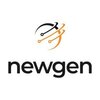Filter interviews by
Axiscades Interview Questions and Answers
29 Interview questions
GD&T (Geometric Dimensioning and Tolerancing) symbols define engineering tolerances for part features, ensuring proper fit and function.
Flatness: Ensures a surface is flat within a specified tolerance (e.g., a flat plate).
Profile of a surface: Controls the shape of a surface in 3D space (e.g., a complex mold).
Position: Defines the exact location of features (e.g., holes must be within a certain tolerance from ...
I have diverse engineering experience, focusing on project management, design, and collaboration in various sectors.
Worked on a team to design a sustainable energy solution for a local community, improving energy efficiency by 30%.
Managed a project that involved the installation of a new water treatment system, ensuring compliance with environmental regulations.
Collaborated with cross-functional teams to develop a...
Revetting is the process of inspecting and repairing damaged or worn parts of a structure or equipment.
Revetting involves examining the condition of components to identify any defects or issues.
Repairs are then carried out to restore the structure or equipment to its original state.
Common examples of revetting include repairing damaged walls, fortifications, or machinery.
The goal of revetting is to ensure the safe...
Stress strain diagram shows the relationship between stress (force applied) and strain (resulting deformation) in a material.
It is a graphical representation of how a material deforms under stress.
The diagram typically consists of a linear elastic region, a yield point, and a plastic deformation region.
The slope of the linear elastic region is the material's Young's Modulus.
The yield point marks the transition fro...
What people are saying about Axiscades





Riveting is a process of joining two or more pieces of metal together using a rivet.
Rivets are typically made of metal and have a cylindrical shaft with a head on one end.
The rivet is inserted into pre-drilled holes in the pieces to be joined, and then the shaft is deformed to create a second head, securing the pieces together.
Riveting is commonly used in construction, aircraft assembly, and metalworking.
Examples ...
I solve problems in revetting by analyzing the root cause, collaborating with team members, and implementing effective solutions.
Identify the specific issue in the revetting process
Discuss with team members to gather different perspectives
Analyze data and feedback to determine the root cause
Brainstorm potential solutions and evaluate their feasibility
Implement the chosen solution and monitor its effectiveness
Adjus...
Aircraft are vehicles that are designed to fly through the air, typically powered by engines or propellers.
Aircraft can be categorized into different types such as airplanes, helicopters, gliders, and drones.
They rely on aerodynamic principles to generate lift and thrust for flight.
Modern aircraft are equipped with advanced avionics systems for navigation and communication.
Commercial aircraft like Boeing 737 and A...
GD&T stands for Geometric Dimensioning and Tolerancing, a system for defining and communicating engineering tolerances.
GD&T is a symbolic language used on engineering drawings to specify the allowable variations in form, size, and orientation of features.
It helps ensure that parts fit together correctly and function properly.
GD&T uses symbols such as concentricity, flatness, perpendicularity, and position to commu...
Stress strain curve shows the relationship between stress and strain in a material under tension.
The curve typically consists of three main regions: elastic deformation, plastic deformation, and fracture.
In the elastic region, the material deforms elastically and returns to its original shape when the stress is removed.
In the plastic region, the material deforms plastically and does not return to its original shap...
Errors in engineering drawings can lead to misinterpretation and mistakes, while improvements can enhance clarity and accuracy.
Errors in engineering drawings can include incorrect dimensions, missing views, unclear symbols, and inconsistent labeling.
Improvements can be made by ensuring all dimensions are clearly labeled, using standardized symbols, providing multiple views for clarity, and maintaining consistency ...
Axiscades Interview Experiences
59 interviews found
Interview Questionnaire
4 Questions
- Q1. 1.Stress vs strain diagram
- Ans.
Stress vs strain diagram shows the relationship between stress and strain of a material.
Stress is the force applied per unit area, while strain is the deformation caused by the stress.
The diagram shows the elastic region, plastic region, and fracture point of a material.
The slope of the curve in the elastic region is the Young's modulus of the material.
The area under the curve in the plastic region represents the energ...
- Q2. 2.Rainflow diagram of fatigue
- Ans.
Rainflow diagram is a method to analyze fatigue in materials under cyclic loading.
Rainflow diagram is a graphical representation of the stress range versus the number of cycles.
It is used to identify the most damaging cycles and predict the fatigue life of a material.
The diagram is created by plotting the stress range versus the number of cycles for each cycle in a loading history.
The resulting diagram shows the number...
- Q3. What is moment of inertia?
- Ans.
Moment of inertia is a measure of an object's resistance to rotational motion.
It depends on the mass distribution and shape of the object.
It is calculated by summing the products of the mass of each particle and the square of its distance from the axis of rotation.
It is used in calculations related to rotational motion, such as torque and angular acceleration.
Examples include a spinning top, a rotating wheel, and a pen...
- Q4. Lug analysis questions?
Interview Preparation Tips
I applied via Campus Placement and was interviewed in May 2024. There were 3 interview rounds.
1. General Aptitude test
2. Technical Aptitude test
(5 Questions)
- Q1. Introduce yourself
- Q2. About my internship experience, About projects
- Q3. Basic core questions. Like stress, strain & applied questions on them
- Q4. Basics of Engineering Drawing
- Q5. Basics about Aircraft Structure
(1 Question)
- Q1. Just stay cool and communicate confidently
Interview Preparation Tips
(2 Questions)
- Q1. Tell me about yourself.
- Q2. Tell me about your previous company experience
It was on Mechanical engineering design,SOM,FEM
(3 Questions)
- Q1. Strength of materials, FEM
- Ans.
Strength of materials refers to the study of the behavior of solid objects under various types of forces.
Strength of materials involves analyzing how materials deform and fail under different loads.
Finite Element Method (FEM) is a numerical technique used to solve complex engineering problems related to strength of materials.
FEM breaks down a complex problem into smaller elements for easier analysis.
Examples of applica...
- Q2. And related to project
- Q3. Introduction about myself and education
I applied via Campus Placement
Core mechanical, Projects, Education
(2 Questions)
- Q1. Core mechanical
- Q2. Projects, education, design
Interview Preparation Tips
Basic Aptitude questions were there
Also related to Strength of material
(2 Questions)
- Q1. Tell me about revetting?
- Ans.
Revetting is the process of inspecting and repairing damaged or worn parts of a structure or equipment.
Revetting involves examining the condition of components to identify any defects or issues.
Repairs are then carried out to restore the structure or equipment to its original state.
Common examples of revetting include repairing damaged walls, fortifications, or machinery.
The goal of revetting is to ensure the safety an...
- Q2. Explain stress strain diagram?
- Ans.
Stress strain diagram shows the relationship between stress (force applied) and strain (resulting deformation) in a material.
It is a graphical representation of how a material deforms under stress.
The diagram typically consists of a linear elastic region, a yield point, and a plastic deformation region.
The slope of the linear elastic region is the material's Young's Modulus.
The yield point marks the transition from ela...
Strength of Machines related questions
(2 Questions)
- Q1. What is the revitting?
- Q2. How you solve the problem in the revetting?
- Ans.
I solve problems in revetting by analyzing the root cause, collaborating with team members, and implementing effective solutions.
Identify the specific issue in the revetting process
Discuss with team members to gather different perspectives
Analyze data and feedback to determine the root cause
Brainstorm potential solutions and evaluate their feasibility
Implement the chosen solution and monitor its effectiveness
Adjust the...
I applied via Campus Placement and was interviewed in Sep 2023. There were 4 interview rounds.
The aptitude round contains quantitative, english and logical reasoning.
Second round is fundamental engineering test. There was 70 questions related to fundamentals of mechanical engineering time is 70 mins. For electrical students additional 25 questions there
(1 Question)
- Q1. Third round is technical. They asked for electrical students basic question like what is voltage, current, frequency, ac an dc. Ohms law. Any five electrical and electronics components and its definition. ...
(1 Question)
- Q1. About personal details
I applied via Walk-in and was interviewed in Oct 2023. There was 1 interview round.
(2 Questions)
- Q1. Beams shear force bending moment
- Ans.
Beams experience shear force and bending moment due to external loads.
Shear force is the force that acts parallel to the cross-section of the beam, causing it to slide in opposite directions.
Bending moment is the internal moment that causes a beam to bend.
Shear force and bending moment diagrams are used to analyze the behavior of beams under different loading conditions.
- Q2. Drawing with shear force bending moment
- Ans.
Drawing with shear force bending moment involves plotting the variation of shear force and bending moment along a beam.
Shear force is the force perpendicular to the beam's axis, causing it to shear or slide.
Bending moment is the moment that causes a beam to bend.
Draw shear force and bending moment diagrams to visualize the internal forces and moments in a beam.
Shear force diagram shows the variation of shear force alon...
Interview Preparation Tips
(1 Question)
- Q1. Explain your previous job profile
(2 Questions)
- Q1. Tool test is the only round
- Q2. Should be good at tool test
Axiscades Interview FAQs
The duration of Axiscades interview process can vary, but typically it takes about less than 2 weeks to complete.
Tell us how to improve this page.
Axiscades Interviews By Designations
- Axiscades Design Engineer Interview Questions
- Axiscades Graduate Engineer Trainee (Get) Interview Questions
- Axiscades Engineer Interview Questions
- Axiscades Assistant Engineer Interview Questions
- Axiscades Senior Engineer Interview Questions
- Axiscades Graduate Trainee Interview Questions
- Axiscades Graduate Engineer Interview Questions
- Axiscades Stress Engineer Interview Questions
- Show more
Interview Questions for Popular Designations
Overall Interview Experience Rating
based on 48 interview experiences
Difficulty level
Duration
Interview Questions from Similar Companies
Axiscades Reviews and Ratings
based on 531 reviews
Rating in categories
|
Design Engineer
535
salaries
| ₹3.2 L/yr - ₹7.2 L/yr |
|
Senior Engineer
319
salaries
| ₹5 L/yr - ₹11.4 L/yr |
|
Engineer
307
salaries
| ₹3.2 L/yr - ₹7.5 L/yr |
|
Assistant Engineer
225
salaries
| ₹2 L/yr - ₹5.2 L/yr |
|
Lead Engineer
211
salaries
| ₹9 L/yr - ₹14.1 L/yr |

ITC Infotech

3i Infotech

Sify Technologies

Microland
- Home >
- Interviews >
- Axiscades Interview Questions













